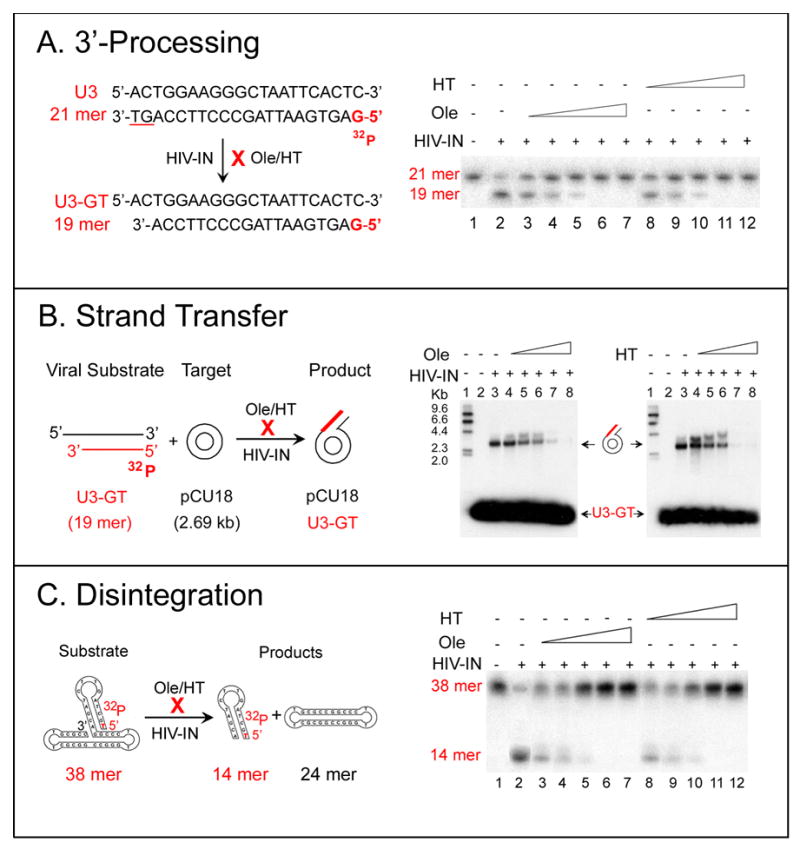Figure 2. The effect of Ole and HT on HIV-1 integrase 3′-processing, strand transfer and disintegration activities.

A. The effect of Ole and HT on HIV-1 integrase 3′-processing activity
Left: Schematic representation of the 3′-processing activity of HIV-1 integrase. A 5′-32P-labeled 21-mer of HIV-1 LTR U3 double-stranded (ds) DNA was used as the substrate. Specific cleavage of the dinucleotide GT from the 3′ end of the substrate results in the formation of 19-mer 3′-recessed U3-GT.
Right: Inhibition of HIV-1 integrase 3′-processing activity by Ole and HT. Inhibition was monitored by the formation of labeled 19-mer product. Lane 1, the 21-mer substrate, 5′-32P-labeled U3. Lane 2, cleavage of the 3′ GT of the 21-mer substrate by HIV-1 integrase results in the formation of the 19-mer 3′-recessed U3-GT. Lanes 3-7 or 8-12, in the presence of 25, 50, 75, 100, and 200 nM Ole or HT.
B. The effect of Ole and HT on HIV-1 integrase strand transfer activity
Left: Schematic representation of strand transfer (integration). Pre-cleaved 5′-32P-labeled U3-GT 19-mer was used as the viral substrate and, unlabeled pUC18 DNA (2.69 kb) was used as the heterologous target substrate.
Right: Inhibition of strand-transfer activity of HIV-1 integrase by Ole and HT. Integration was monitored by the conversion of the unlabeled plasmid into labeled DNA. Lanes 1, 5′-32P-labeled size marker, HindIlI fragments of λ phage DNA. Lanes 2, target substrate, pUC18; because it is unlabeled, it is not seen in the autoradiogram. Lanes 3, the product of integration (ST) by HIV-1 integrase. The integration of the 5′32P-labeled U3-GT into pUC18 results in the appearance of labeled band at 2.69 kb, corresponding to the size of pUC18. Lanes 4–8, in the presence of 25, 50, 75, 100 and 200 nM Ole or HT.
C. The effect of Ole and HT on HIV-1 integrase disintegration activity
Left: Schematic representation of the disintegration activity of HIV-1 integrase. The 5′ 32P-labeled 38-mer dumbbell was used as the substrate and shown with the predicted secondary structure. Disintegration yields a 32P-labeled 14-mer consisting of the viral sequences in the hairpin stem and a 24-mer unlabeled target sequence that has been repaired.
Right: Inhibition of disintegration activity of HIV-1 integrase by Ole and HT. Lane 1, the 5′ 32P-labeled 38-mer dumbbell substrate. Lane 2, treatment with HIV-1 integrase results in the formation of the 5′ 32P-labeled14-mer disintegration product. Lanes 3, 4, 5, 6, 7 disintegration assays in the presence of 25, 50, 75, 100, and 200 nM Ole. Lanes 8, 9,10,11,12, in the presence of 25, 50, 75, 100, and 200 nM HT.
